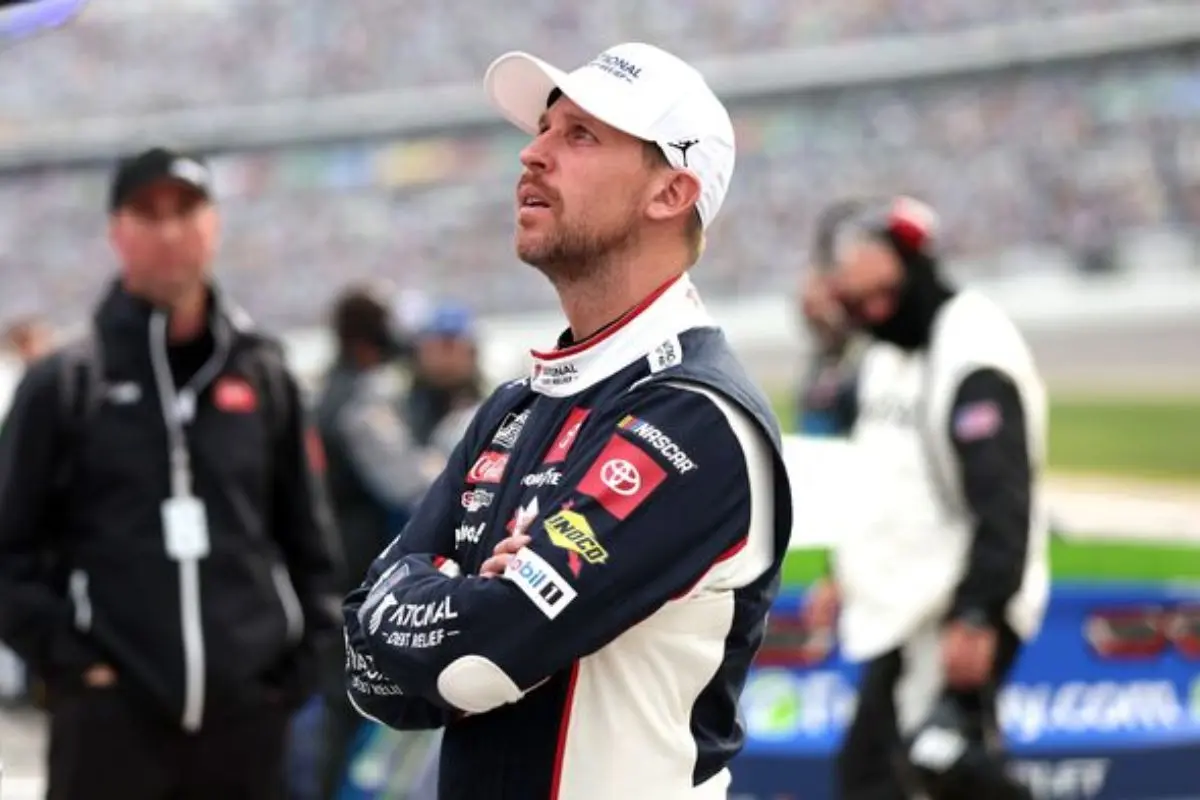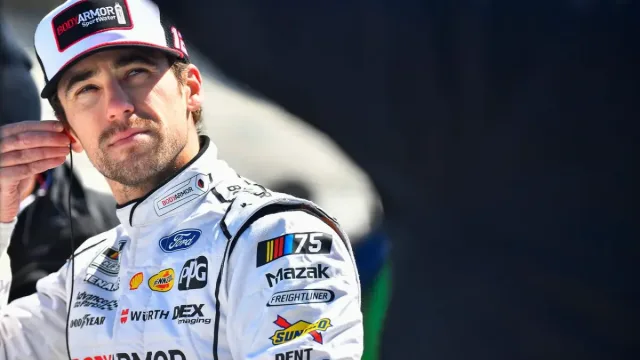Pit crew performance emerged as a decisive factor at Darlington Raceway, where Kevin Harvick highlighted the costly missteps that undermined Ryan Blaney’s lead. A late caution exposed the No. 12 team’s pit road inefficiencies, ranking 35th in crew efficiency for the event. Meanwhile, Denny Hamlin’s crew executed a 9.42-second stop that propelled him to victory. The stark contrast in execution has fueled scrutiny over Blaney’s team structure, raising questions about whether strategic changes could elevate them to elite status.
Key Highlights
- Kevin Harvick highlighted Ryan Blaney’s pit crew inefficiency as a critical factor in his Darlington race struggles.
- A late caution led to pit stops where Blaney’s No. 12 team ranked 35th in efficiency, losing valuable track position.
- Poor pit stop performance derailed Ryan Blaney’s lead and championship ambitions at Darlington.
- Denny Hamlin’s efficient pit crew showcased the difference by securing his victory with a swift 9.42-second pit stop.
- Blaney’s experience underscores the critical role of pit crew efficiency in NASCAR race outcomes.
Importance of Pit Stops and Early Problems
In the world of NASCAR, pit stops are essential moments that can determine the outcome of a race, showcasing the vital balance between speed and precision. For drivers like Denny Hamlin, these stops can mean the difference between victory and loss, as evidenced by his success at Darlington. The #11 pit crew’s rapid final stop proved significant, demonstrating the importance of teamwork and timing.
In contrast, Ryan Blaney‘s experiences exemplify the challenges teams face when expectations falter. The No. 12 team’s difficulties on pit road highlight the importance of these stops in the broader race strategy. A misstep can derail even the most promising championship aspirations.
Blaney’s close call at Darlington emphasizes the need for flawless execution, especially in a team like Penske, known for past achievements. As teams navigate the intricacies of NASCAR, pit stops remain a vital factor, dictating the fine line between success and failure.

Kevin Harvick’s Analysis and Pit Road Incident
The significance of pit stops was brought into sharp focus at Darlington Raceway, as Kevin Harvick scrutinized Ryan Blaney‘s unfortunate pit road incident. Blaney, in pursuit of his initial victory at this challenging track, was leading when a late caution triggered a crucial series of pit stops.
Unfortunately, Blaney’s pit crew performance faltered, with the No. 12 team ranked 35th in pit crew efficiency that week, a detail Harvick keenly pointed out.
They [Car no 12] were ranked 35th this week in the pit crew ranking.”
“If you don’t think it’s important [pit stops], you’re not going to put yourself to be in contention to consistently win.” – Kevin Harvick
Harvick stressed the vital role of pit crew efficiency in securing victories, stating that neglecting its importance jeopardizes a driver’s consistent winning potential. As Blaney exited pit road in fourth instead of maintaining his lead, the incident emphasized Harvick’s point.
The loss of critical track position in those final laps demonstrated the critical nature of pit stops in high-stakes racing. Blaney’s subsequent challenges further amplified the need for a proficient pit crew.
Denny Hamlin’s Success and Comparison
Amidst the competitive atmosphere at Darlington Raceway, Denny Hamlin’s No. 11 team demonstrated the vital impact of pit crew efficiency. Their exceptional performance on pit road transformed Hamlin’s positioning, as he entered in third place and exited in first. This tactical advantage was secured by an impressive pit stop time of just 9.42 seconds.
The swift execution by Hamlin’s crew was significant, as it enabled him to maintain the lead and ultimately secure victory. He crossed the finish line 0.597 seconds ahead of William Byron, showcasing the tangible benefits of precise team coordination.
The contrast between Hamlin’s efficient pit crew and the struggles faced by others, including Ryan Blaney, highlights the important role of pit stops in race outcomes. Kevin Harvick succinctly acknowledged this, stating that the pit crew fundamentally won the race for Hamlin.
“You see Hendrick be super aggressive in the changes that they made with their pit crew.” – Kevin Harvick

Hendrick Motorsports as a Model
While many teams struggle with pit crew inefficiencies, Hendrick Motorsports stands as a model of effective pit crew management. Their proactive approach, observed by Kevin Harvick, highlights their tactical decision-making.
Ahead of the 2025 NASCAR Cup Series Goodyear 400, Hendrick Motorsports made noteworthy changes to Kyle Larson’s No. 5 pit crew, exemplifying the benefits of aggressive adjustments. By introducing Jafar Hall as the front tire changer, Mike Moss as the rear tire changer, Allen Stallings as the tire carrier, and Eric Ludwig as the jackman, they reshaped their team dynamics.
Brandon Harder remained the steadfast fueler, preserving some continuity. This meticulous restructuring emphasizes Hendrick’s commitment to excellence, reflecting a plan that improves performance in vital moments.
Harvick’s observations suggest that adopting similar measures could greatly influence Team Penske and Ryan Blaney, enabling them to seize their on-track potential and secure consistent victories in the competitive NASCAR landscape.

Crew Chief’s Statement and Future Focus
Ryan Blaney had a tough time going for the win because of problems during pit stops. Crew chief Jonathan Hassler said the team is strong enough to win but must avoid mistakes. One big issue happened when a broken jack slowed them down a lot.
“The group’s perfectly capable. We’ve just got to clean it up, and we’ll be there, hopefully, sooner rather than later.” – Jonathan Hassler
Later, the crew had a solid pit stop timed at 10.10 seconds. Still, other teams were faster, some even under 9 seconds. On the final stop, Blaney’s crew matched the No. 24 car’s time, but that team had a better pit location near pit exit.
“They definitely had one mistake with the jack that cost us a lot of time.” – Jonathan Hassler
Blaney’s pit stall was way down pit road, meaning they needed to be perfect just to keep up. That didn’t happen this time. Now, the crew is working hard to improve before the Bristol race, where every second could make or break their weekend.
Jonathan Hassler on their almost strategy with the 12 team and the state of their over-the-wall crew pic.twitter.com/kLSQNfDvCV
— Matt Weaver (@MattWeaverRA) April 6, 2025
News in Brief: Ryan Blaney Pit Crew Performance
Kevin Harvick’s observations highlight critical pit crew inefficiencies that impacted Ryan Blaney’s performance at Darlington. Harvick’s analysis emphasizes the significance of flawless pit stops in racing success, while Denny Hamlin’s victory demonstrates the competitive advantage of effective team execution. Relatively, Hendrick Motorsports exemplifies operational excellence, setting a benchmark for others. The crew chief’s remarks stress the need for tactical improvements and focused training to avoid future setbacks, ensuring competitive parity and enhancing team performance in forthcoming races.
ALSO READ: Ryan Blaney’s Victory Hopes Dashed by Late-Race Chaos at Darlington
